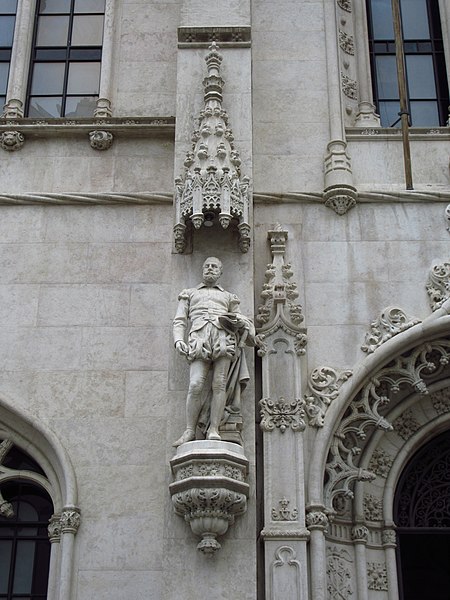São Tomé and Príncipe, officially the Democratic Republic of São Tomé and Príncipe, is an island country in the Gulf of Guinea, the western equatorial coast of Central Africa.
São Sebastião Museum in São Tomé
Capture of São Tomé by Cornelis Jol of the Dutch West India Company in 1641.
Railroad in São Tomé and Príncipe circa 1919
The Our Lady of Grace Cathedral of São Tomé
Portuguese is a Western Romance language of the Indo-European language family originating from the Iberian Peninsula of Europe. It is the official language of Portugal, Brazil, Cape Verde, Angola, Mozambique, Guinea-Bissau and São Tomé and Príncipe, and has co-official language status in East Timor, Equatorial Guinea, and Macau. Portuguese-speaking people or nations are known as "Lusophones". As the result of expansion during colonial times, a cultural presence of Portuguese speakers is also found around the world. Portuguese is part of the Ibero-Romance group that evolved from several dialects of Vulgar Latin in the medieval Kingdom of Galicia and the County of Portugal, and has kept some Celtic phonology.
Sign in Japanese, Portuguese, and English in Oizumi, Japan, which has a large lusophone community due to return immigration of Japanese Brazilians.
Multilingual signage in Chinese, Portuguese and English at the Hong Kong–Zhuhai–Macau Bridge port building in Macau. Portuguese is a co-official language in Macau.
Statue of the Portuguese Poet Luís de Camões at the entrance of the Real Gabinete Português de Leitura in Rio de Janeiro.
Museum of the Portuguese Language in São Paulo.








